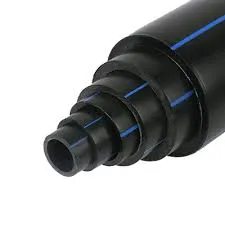Nov . 15, 2024 08:17 Back to list
hdpe plastic pipe
HDPE Plastic Pipe A Versatile Solution for Modern Infrastructure
High-Density Polyethylene (HDPE) plastic pipes are becoming an increasingly popular choice for various engineering projects, owing to their remarkable properties and versatility. With applications ranging from water supply and drainage systems to industrial and agricultural purposes, HDPE pipes have established themselves as an essential component in modern infrastructure development.
The Composition and Advantages of HDPE
HDPE is a thermoplastic polymer made from the polymerization of ethylene. Its unique molecular structure imparts several advantageous properties, making it suitable for diverse applications. One of the primary benefits of HDPE pipes is their resistance to corrosion and chemical degradation. Unlike traditional materials, such as metal or concrete, HDPE does not deteriorate over time when exposed to various chemicals or environmental conditions, ensuring longevity and reliability.
Another notable advantage is the flexibility of HDPE pipes. This property allows for easier installation, especially in challenging terrains. Compared to rigid pipes, HDPE pipes can bend without breaking, making them ideal for projects involving uneven or shifting ground. Additionally, their lightweight nature simplifies transportation and handling, further streamlining the installation process.
Impact on Water Management
Water supply systems across the globe are increasingly adopting HDPE pipes due to their effectiveness and reliability. The pipes can be used for transporting potable water, wastewater, and stormwater. Since HDPE is non-toxic and does not leach harmful substances into the water, it is a safe option for drinking water applications.
Moreover, the smooth interior surface of HDPE pipes minimizes friction and reduces the likelihood of blockages, which can be a common issue with older materials. This characteristic contributes significantly to improved flow rates and overall efficiency in water management systems.
hdpe plastic pipe

Environmental Considerations
In an era where sustainability is paramount, HDPE pipes present an eco-friendly alternative. The production process of HDPE is energy-efficient, and the material itself is 100% recyclable. End-of-life HDPE pipes can be repurposed, reducing waste in landfills and promoting a circular economy. Additionally, because they have a longer lifespan than many conventional piping materials, they result in less frequent replacements, further reducing environmental impact.
Applications in Construction and Industry
In addition to their use in water management, HDPE pipes are widely employed in various industries. The oil and gas sector uses HDPE pipes for the transportation of fuels and chemicals, benefiting from their resistance to corrosive substances. Similarly, agricultural applications utilize HDPE pipes for irrigation systems, where durability and efficiency are crucial for optimal crop yield.
Furthermore, the construction industry often utilizes HDPE pipes for drainage systems. Their ability to withstand extreme weather conditions makes them ideal for managing stormwater runoff, minimizing flooding risks in urban areas. The versatility of HDPE allows it to be utilized in various construction applications, facilitating innovative designs and solutions.
Conclusion
In conclusion, HDPE plastic pipes represent a significant advancement in piping technology, offering numerous benefits that align with the needs of modern infrastructure. Their resistance to corrosion, flexibility, and eco-friendly nature make them an excellent choice for a wide range of applications. As communities continue to seek sustainable and efficient solutions for water management and industrial needs, the adoption of HDPE pipes is likely to grow, establishing them as a cornerstone of future infrastructure development. With their unique properties and versatility, HDPE pipes will undoubtedly play a crucial role in building a more sustainable and resilient world.
-
Premium PVC Soft Sheets: Clear, Flexible & Durable
NewsAug.12,2025
-
Premium PVC Round Rods: Durable, Chemical Resistant, Easy to Machine
NewsAug.11,2025
-
PP U-channel: Chemical-Resistant, Lightweight & Durable
NewsAug.10,2025
-
Transparent PVC Pipe: Clear Flexible Tubing for Fluids
NewsAug.09,2025
-
Durable PP Rigid Sheet: Versatile & High-Quality Plastic Panels
NewsAug.08,2025
-
Premium Glossy PP Rigid Sheet – Durable & Versatile
NewsAug.07,2025

